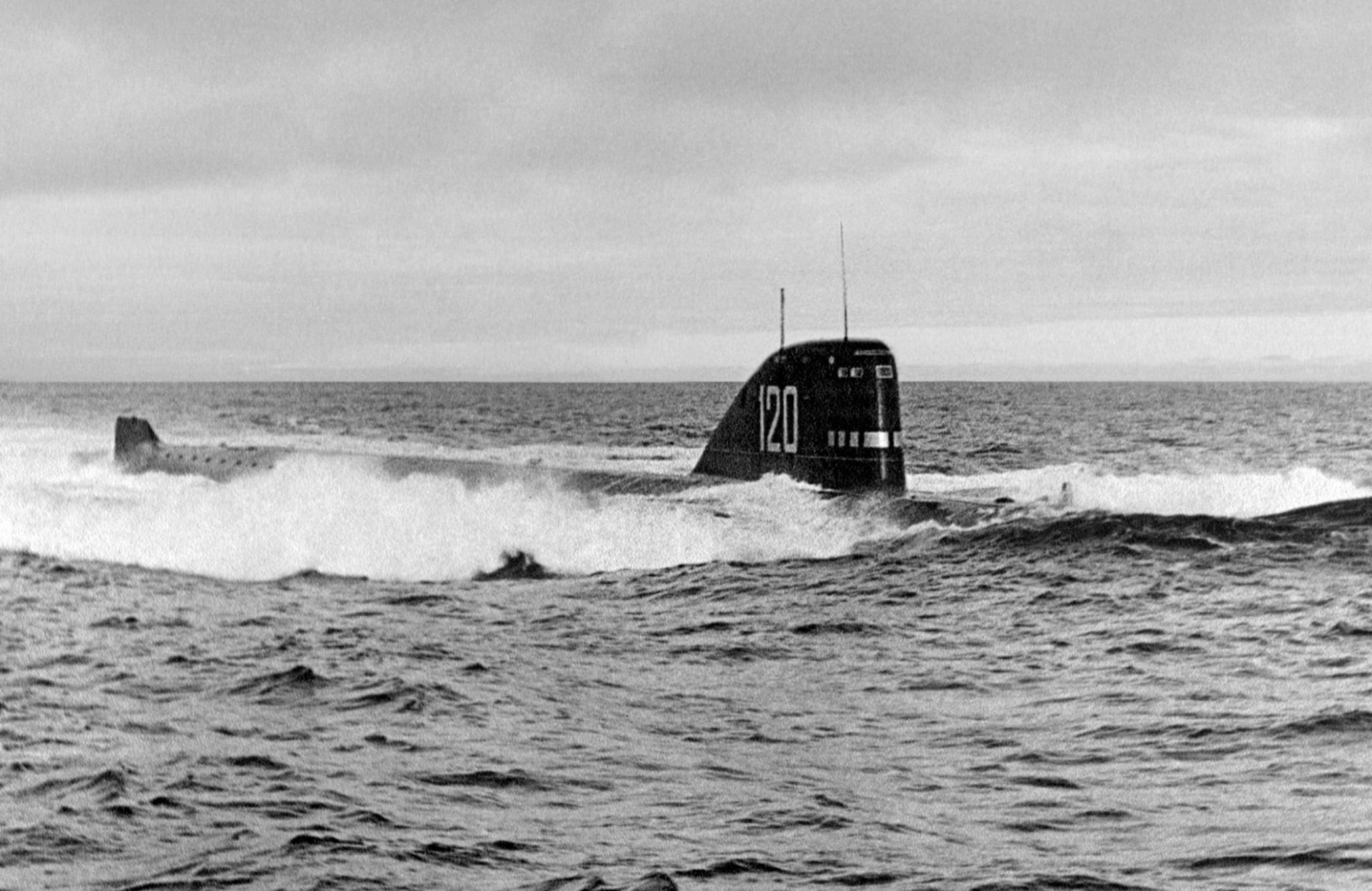The fatal meltdown at sea aboard the lead-bismuth cooled Soviet submarine K-27
By Nick Touran, Ph.D., P.E., 2024-09-23 , Reading time: 2 minutes

What happened?
The Project 645 K-27 was a Soviet November-class submarine powered by twin beryllium-moderated, lead-bismuth (liquid metal) cooled 73 MW VT-1 nuclear reactors (also designated RM-1 reactors). This was not one of those small Alfa-class lead-bismuth cooled subs, but a much larger one that came before those, with a crew of 144. It launched in 1962.
At this time, purity requirements for lead-bismuth coolants were not well understood. During operation, lead oxides had accumulated in significant masses in the primary system. Additionally, the primary coolant was contaminated with oil pyrolysis products, as oil was used in the seals of pump shafts. The pump seals were unreliable and leaked oil into the coolant.
In 1968 it was 5 hours out from the Kola Peninsula, preparing for a 70-day round-the-world-without-resurfacing mission and was sent into a naval exercise. A steam generator leak caused all the impurities and oxides to enter into the core, which reduced heat removal dramatically by blockages of coolant channels. Negative temperature feedback caused the core power to drop to 7% of nominal capacity.
The operational procedures did not include instructions to the operator in this condition. The naval commander directed that the power be restored to a higher level in order to participate in the training exercise. All other control rods were pulled out of the core. This increased power, and the core region with blocked flow overheated and melted. Some melted fuel was entrained in the remaining coolant flow and removed out of the core entirely. This spread highly radioactive material to parts of the ship by the steam generator that were not as radiation shielded as the core area.
Radiation alarms in inhabited areas led to evacuation of the reactor area and the crew was moved to distant compartments. As some crew ran past others, they flipped on radiation meters and were surprised to see them off the chart.
As the ship came back to port, the port radiation sirens were blaring. Nine members of the crew died of acute radiation syndrome from their exposures.
K-27 officers were warned that they should not have children for five years.
In 1981, the reactor compartment was backfilled and sunk off Novaya Zemlya in 50 m deep water.
Lessons
- Do not let air or oil leak into your liquid-metal coolant systems. Use pressurized cover gas, high-performance seals, and sensitive instrumentation to ensure this. Maintenance of purity can be particularly challenging during maintenance or fuel reloading.
- Include oxygen sensors in lead-bismuth reactor systems
- Do not use oil-based seals for pump shafts in liquid metal reactors
- Include and operate a continuously operated coolant purification system
- Make sure your procedures include instructions about what to do in abnormal conditions
References and additional reading
- Use of Russian technology of ship reactors with lead-bismuth coolant in nuclear power
- Reistad and Ølgaard, Russian Nuclear Power Plants for Marine Applications, Nordic nuclear safety research, NKS-138, April 2006 (2009)
- Kiryukhina, Eyewitness: Tragedy of Soviet nuclear submarine K-27, January 24, 2013
- K-27 on deepstorm.ru
This page is a part of our Safety Minute collection. You can edit it or add more on GitHub.